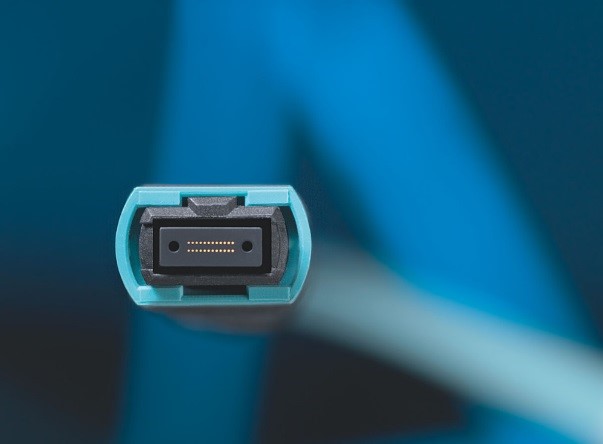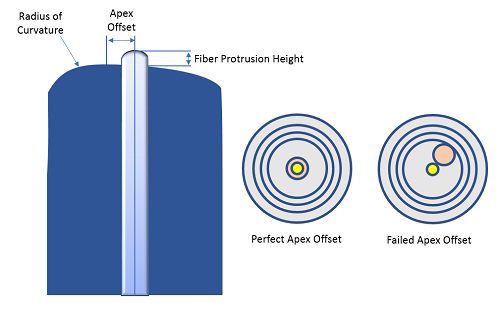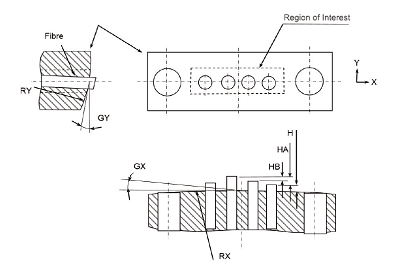Save Face: Why Fiber End Face Geometry Matters
October 18, 2017 / General, Installation and testing, Upgrading and troubleshooting, Industrial Networks
We all know that dirty fiber connector end faces can cause loss and reflection, which is why they need to be cleaned and inspected before making that final connection. But what if you’ve properly cleaned and inspected the fiber end face for contamination, tested it using the FI-7000 FiberInspector Pro, and the connector still doesn’t pass muster? Maybe, just maybe, you have a connector end face that doesn’t meet end face geometry parameters.
Not Too High, Not Too Low
 When a fiber end face doesn’t meet geometry parameters, mated connections can experience gaps or misalignment that can cause higher optical loss. For example, one of the critical parameters specified in industry standards for fiber end face geometry is fiber protrusion height—the height that a fiber core extends from the ferrule surface. If the height is too high, the fiber risks being damaged when mated, and when it’s too far recessed into the ferrule, gaps can occur that result in increased insertion loss.
When a fiber end face doesn’t meet geometry parameters, mated connections can experience gaps or misalignment that can cause higher optical loss. For example, one of the critical parameters specified in industry standards for fiber end face geometry is fiber protrusion height—the height that a fiber core extends from the ferrule surface. If the height is too high, the fiber risks being damaged when mated, and when it’s too far recessed into the ferrule, gaps can occur that result in increased insertion loss.
For multi-fiber MPOs, fiber height parameters get even more complicated. That’s because there are more fibers. Not only must each fiber in the MPO meet fiber protrusion height parameters, but there is also a maximum fiber height differential parameter among all fibers in the array and between any two adjacent fibers. In other words, there is a maximum difference that can exist between the shortest and tallest fiber in an array, as well as between any two adjacent fibers, and those values are ≤500 nanometers (nm) and ≤300 respectively as defined by IEC PAS 61755-3-31.
Fiber height differentials in an MPO connector are important because if one fiber in the array to too short, that particular fiber may exhibit insertion loss due to gaps when mating. And when you consider 40 and 100GBASE-SR4 applications that require 8 fibers for transmission and have very stringent insertion loss requirements, gaps are certainly something you want to avoid.
Must Have Contact and Alignment

There are additional end face geometry parameters that can also impact performance. The radius of curvature, or the overall roundness, of the end face surface matters. If the curvature is too steep, the result is smaller contact area, which not only risks performance but can also increase the chances of glass deformation.
Precisely how close the dome or apex of the end face is centered is also necessary for achieving excellent core-to-core connect when mating. If the apex is offset, you simply won’t have a good connection.
Yet again, when it comes to MPOs, there is more to worry about. The angle of polish on each of the fibers both on the horizontal and vertical axis must also be consistent for proper alignment when mating connectors.

This graphic from IEC PAS 61755-3-31 shows the four main end face geometry parameters for MPOs (with four fibers shown for clarity) – angle of the polish on the horizontal axis (RX and GX), angle of the polish on the vertical axis (RY and GY), fiber protrusion height (H), maximum fiber height differential among all fibers (HA) and maximum adjacent fiber height differential (HB). As one can imagine, these parameters become even more difficult to meet in larger multifiber arrays like 24-fiber MPOs.
Choose Smart and Worry Free
The good news is that reputable manufacturers in the industry ensure that all simplex, duplex and MPO connectors meet required end face geometry parameters, so end face geometry is not something you typically have to worry about. But you still need to clean and inspect them—any quality end face can still become contaminated!
However, beware of inexpensive fiber connectivity from unfamiliar sources—no matter how well you clean a fiber connector that doesn’t meet end face geometry parameters, you simply won’t get the performance you need.




